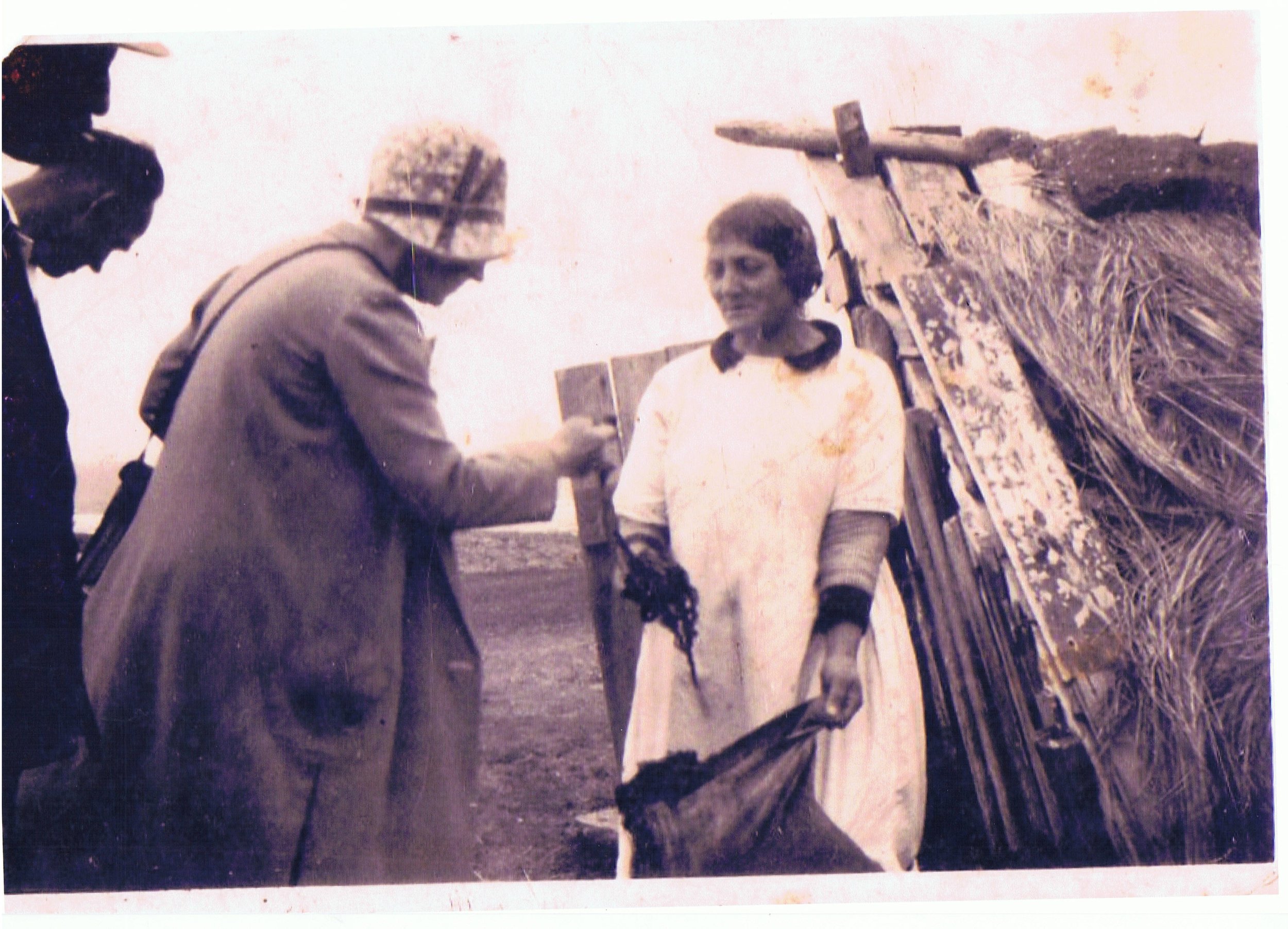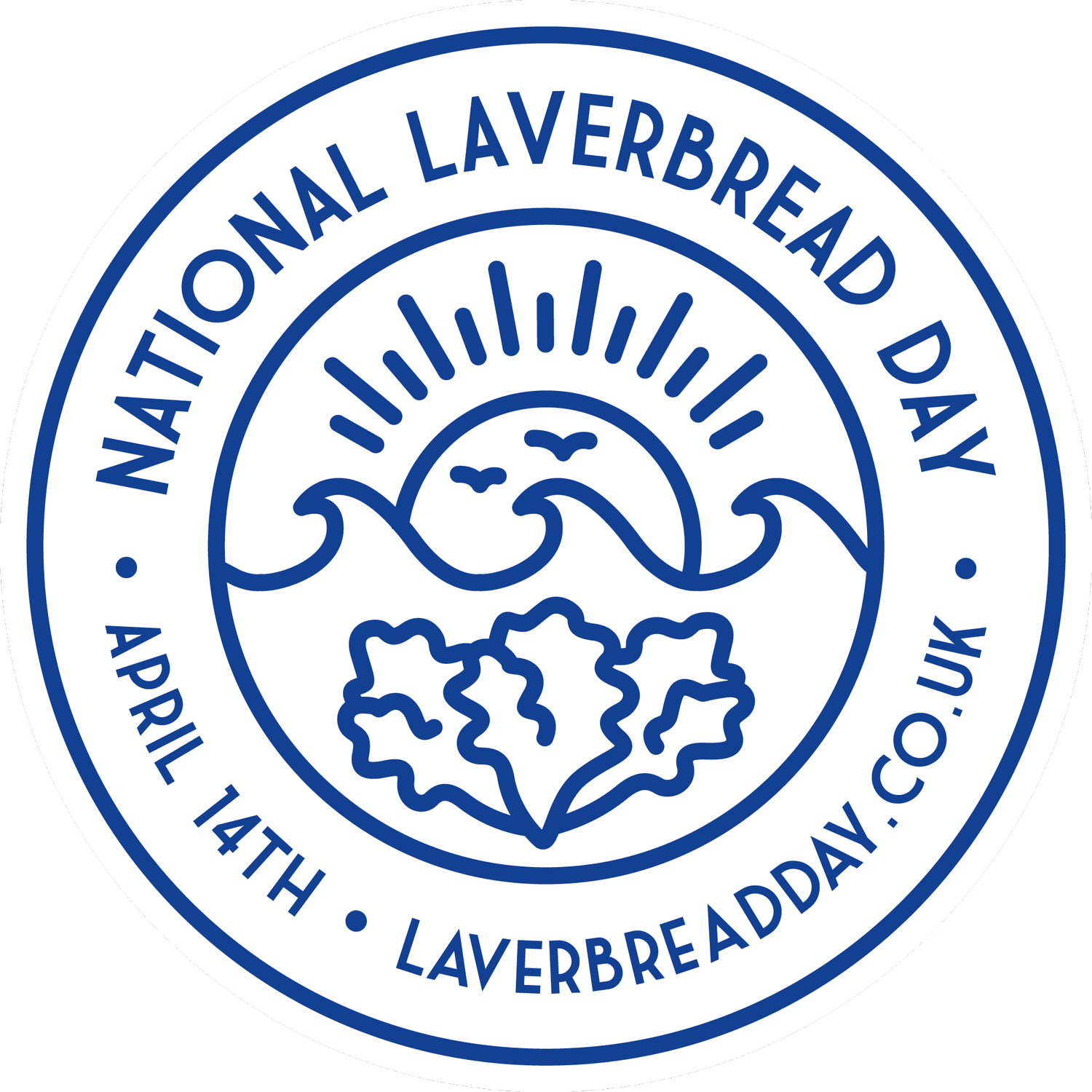
The Story of Laver Seaweed in Wales
No one knows precisely when people in west Wales first started eating laver, some say it was first introduced as a survival food by the Vikings, while others say it goes back to the very first inhabitants of Wales.
It may have been the first coastal inhabitants who took that bold step into the unknown world of laver seaweed and put it on their plate!. In doing so it started a food culinary wonder which became the very fabric of Welsh culture and traditions.
12th Century
The very first written description of laver being eaten was in Pembrokeshire and was supposedly mentioned by Giraldis Cambrensis (Gerald of Wales) in the 12th century on his adventure around Wales.
1607
However it is fully documented in William Camden's Britannia – 1607, where it vividly describes the springtime gathering of "Lhawvan" from the beach of Eglwys Abernon near St David's in Pembrokeshire:
1695
From: Camden’s Britannia, Gibson’s edition which includes contributions on Wales by Edward Lhwyd, (1695), p. 765.
“A Letter from my ingenious Friend, the Reverend Mr. Nicholas Roberts, A. M. Rector of Lhan Dhewi Velfrey, [Llanddewi Velfrey, Pembrokeshire] … a sort of Food, made in several parts of this County, of a Sea-plant, which, by the description I hear of it, I take to be the Oyster-green or Lectuca marina. This custom I find obtains also in Glamorganshire (where it is call’d Laverbread) as also in several parts of Scotland and Ireland, and probably in some Counties of England. … Near St. David’s (says Rev. Nicholas Roberts) especially at Eglwys Abernon, and in other places, they gather, in the spring-time, a kind of Alga or sea-weed, with which they make a sort of food call’d Lhavan or Lhaw-van, in English Black butter. Having gather’d the weed, they wash it clean from sand and slime, and sweat it between two tile-stones; then they shred it small, and knead it well, as they do dough for bread, and make it up into great balls or rolls, which some eat raw, and others, fry’d with oatmeal and butter. It is accounted sovereign against all distempers of the liver and spleen: and the late Dr. Owen assur’d me, that he found relief from it in the acutest fits of the stone.”
1801, St David’s
From: Manby, G.W., History and Antiquities of St David, (1801), p. 76 (Based on Browne Willis’s survey of 1716)
“The wild vegetable productions of St David’s have no great variety: they used to gather a kind of alga or sea-weed, of which they made a sort of food, called in Welch Lhavan and in English black butter; being washed clean, it was laid to ferment between two flat stones, then shredded small, and kneaded well, like dough, for bread; and afterwards made up into great balls, or rolls, which some ate raw, but others fried with oatmeal and butter: it was accounted excellent against all distempers of the liver and spleen; and some affirm that they have been relieved by it in the sharpest fits of the stone.”
1803, St David’s
From: Evans, John, B.A., 1768-1812 (Jesus College, Oxford), Letters written during a tour through South Wales, in the year 1803, and at other times : containing views of the history, antiquities, and customs of that part of the principality; and interspersed with observations on its scenery, agriculture, botany, mineralogy, trade and manufactures. (London, 1804), p. 299
“… the coast abounds with a great variety of genera of the cryptogamious division of algae: among others, the ulva lactuca and the ulva umbilicalis claim particular attention, and the inhabitants of this country … collect these plants which abundantly attach themselves to the rocks and stones, and by a certain process they form a substance which serves for food as well as medicine. Having gathered the plants, they wash them clean from sand and slime, leaving them to drain between two tiles or stones; they are then shred small, kneaded like dough, and made up into balls or rolls, which are called Llaivan, or dark butter…. It is sometimes pickled with salt, packed into jars, and sent to London, where it is brought to the table as a delicacy, stewed and eaten with lemon juice and oil.”
1807, Milford
From: Fenton, Richard, A Tour in Quest of Genealogy Through Several parts of Wales, Somersetshire, and Wiltshire, in A Series of Letters to a friend in Dublin; interspersed with a description of Stourhead and Stonehenge; together with various Anecdotes, and curious fragments from a manuscript collection ascribed to Shakespeare. By a Barrister. (1811), p. 79.
“Our guests having returned, we dined on very fine fish and Welsh mutton, rendered more relishing by means of that most excellent of all pickles, samphire, here in the highest perfection; and an accompaniment of all others most in unison with Welsh mutton, called laver, or vulgarly black butter, the produce of a fine marine plant or alga.”
1863, Swansea
From: Anon, Journal of a Tour in south Wales (Pembrokeshire, Carmarthen, Swansea, Cardiff) Cardiff Central Library, MS 3.272 ‘South Wales, Autumn, 1863’, p. 73.
“Seaweed – laver cakes are sold by Swansea market women for 1d or 2d each.”
During the mining era in the 19th century, "lawr" became a staple food of the pit workers as part of breakfast. In 1865 George Borrow on his travels wrote of "moor mutton with piping hot laver sauce", a great dish of the time.
Swansea became the laverbread mecca and with its close proximity to the rich cockle beds of Burry Port inlet, cockles and laverbread became the icons of Welsh food and very much the fuel that fed the people as part of the industrial revolution.
1879
The Shipwreck of Thomas M Reed at Frianslake beach and the beginning of the seaweed huts at Freshwater West – the Black Gold. The development of “20” seaweed huts known locally as “Little Angle”. The seaweed huts were used by the local women from Angle to dry out “the weed
1950’s
Beginning of the end of the seaweed huts at Freshwater West, dubbed “little Angle”,”. However by the 1950’s the Swansea boys were getting rich and treating themselves to cars which meant they started collecting their own and cutting out the middle man or middle “ladies” in this case.
Audrey Hicks epitomised the character of Angle seaweed pickers who picked seaweed all her working life. On a good day, it was said they could pick 3 or 4 hundredweight.
The Hicks family were particularly well-known as laver gatherers and the last of the old time-gatherers was Audrey. When she began work as a girl of 14 there were 20 gatherers’ huts, but eventually, hers was the only one remaining.
1950’s
Laverbread becomes embedded in Dylan Thomas classic “Undermilkwood”.
“To begin at the beginning: It is spring, moonless night in the small town, starless and bible-black, the cobblestreets silent and the hunched, courters'-and-rabbits' wood limping invisible down to the sloeblack, slow, black, crowblack, fishingboatbobbing sea”
SECOND DROWNED Is there rum and laverbread?
However as the mining communities declined during the mid-20th century and the rise of in popularity of processed ready meals, the demand of laverbread declined so much so that in the 1970s the BBC Radio 4 Food and Farming program saw it as a food about to be assigned to the history books. Indeed Derek Cooper visited some of the last remaining laverbread producers recording this “dying” industry.
1960’s
Richard Burton coin’s the phase, laverbread the “Welshman’s Caviar”. Though apparently this was fabricated by Bobby Freeman, a Welsh Food writer who at the time tried to promote Laverbread by calling it “Welshman’s Caviar”.
1980, Western Telegraph
“73-year-old Mrs Joan Eynon recalled the days when as a young woman she and her friends had gone laver gathering. When the tide was right they would set out at 4 a.m. to cross the fields and walk along the beach to reach the flat seaweed covered rocks on the south side”.
“It was women’s work, “she said, “and very much a local industry. When I was doing it there were about 12 of us, but I think that once there were about 50 gatherers”.
“In the summer you’d get a bag full in no time, but sometimes you could work for hours to get it full”.
She said the weed was spread out in thatched huts to dry and on Monday mornings was sacked and labelled. Mr. Reuben Cousins came with his horse and cart to take it to Pembroke station and from there it went to dealers in Swansea where it was made into laverbread and sold in the markets.
Earlier the transport had been by donkey and after the days of the horse and cart it was Mrs. Eynon’s husband. Mr John Eynon, who picked it up by lorry.
The old hut was restored by members of the Pembroke Rotary Club but the ravages of several winters have taken their toll.
One of the men eager to help the National Park is Mr Howard Howells, of Tudor House Castlemartin, who has lived in the area nearly all his life. As a farm worker he has thatched hundreds of hay ricks and said he would be happy to bring his expertise to this old hut – even though he does not like laverbread.
He recalled the days of the laver gatherers: “Get a low tide at Freshwater West and they’d be there,” he said. “They were hardy people and they could rough it. You’d see them there carrying the bags on their heads”.
He said that when the industry was at its height the thatching reed grew in abundance on the land where the army is now.
The Future of Laverbread
“Laver seaweed requires no land, freshwater or pesticides to grow. It packs more vitamins and minerals than any land-based vegetable and high levels of protein. In addition, 75% of the planet’s oxygen comes from marine algae and research has confirmed that per acre, seaweed can absorb more than 20 times as much carbon dioxide as a forest.
If we are searching for future food, and solution to our ever-increasing climate change and challenges, then we may not need to look any further than laverbread.
Laverbread has it all, high nutritional value, sustainability, easy to cultivate and a positive impact on our planet and environment, so join us in our celebration of this truly wonderful weed.





